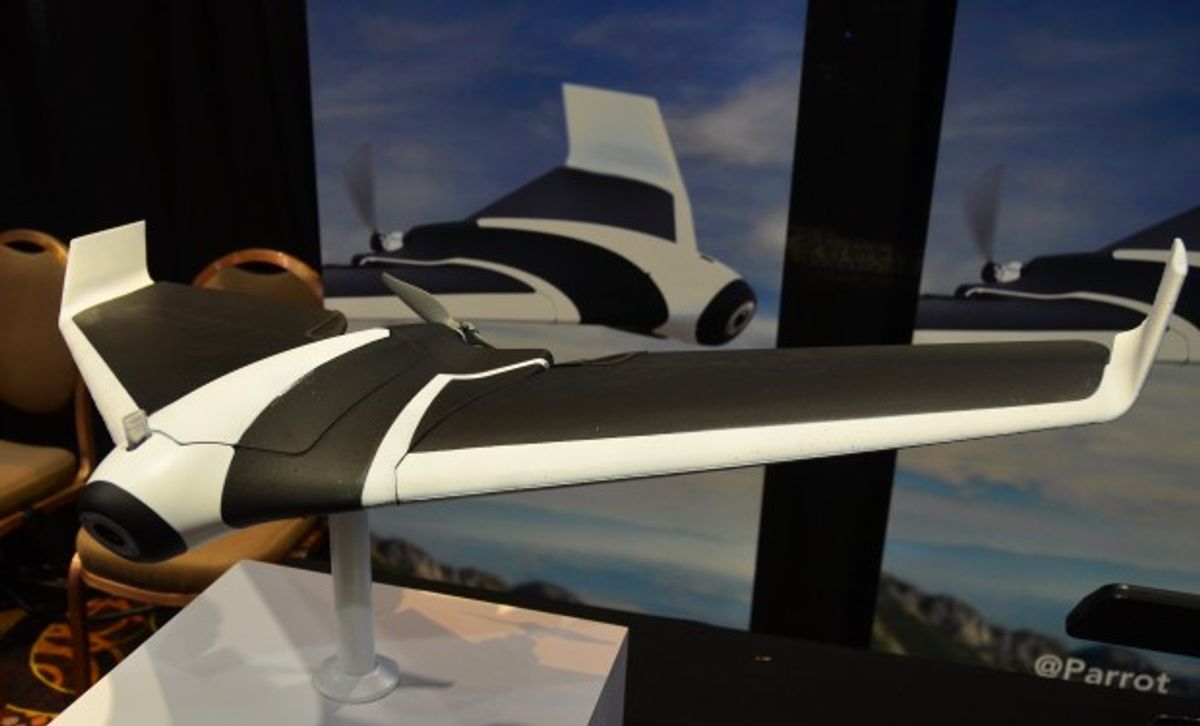It wouldn’t be CES without a new drone from Parrot. Not that we’re complaining: Parrot makes awesome drones. You can probably guess what’s new about the Disco, though: a pronounced lack of rotors and the addition of a symmetrical pair of passive lifting surfaces. In other words, it’s got wings.
As soon as we saw this thing, we were like, “Oh, that looks familiar!” You remember the eBee, right? Of course you do!

The eBee is an autonomous mapping drone from SenseFly, a spinoff of ETH Zurich that Parrot acquired a majority of in 2012. With that in mind, it’s really no surprise to see an eBee-ish fixed-wing drone with a solid dose of autonomy come from Parrot. We’re told that a major part of Disco’s autopilot came directly from SenseFly, which is excellent, since the eBee’s autopilot is absolutely top-notch all the way from takeoff (you throw it) to landing (it gently crashes in front of you).

Now, fixed-wing drones are different beasts than Parrot is used to on the consumer side, and there’s a reason that most of the entry-level flying robots that we’ve seen recently are multicopters. With a fixed wing aircraft, they depend on forward motion to generate lift, meaning that they’re either constantly moving or they’re in the process of crashing. You can’t hover, so as a pilot you have to maintain concentration and control all the time, and the high horizontal velocity means that the time between you losing control and the drone disappearing off into the wild blue yonder is very, very short.
Thoughtfully, Parrot has included some features to make it easier to fly, and learn how to fly, Disco. First, just like the eBee, you launch it by turning it on and chucking it as hard as you can. It’ll self-calibrate, self-stabilize, gain some altitude and circle by itself until you take control. Flying the Disco is very friendly, with sensors massaging your control inputs to make sure that the drone keeps stable and behaves predictably. The autopilot lets you set GPS-based bounding boxes that will keep Disco from bailing on you, which is nice, although you can’t set a lower bound (just an upper one) so crashing is still possible. If you do crash, Disco will most likely be fine, since it’s made almost entirely out of that expanded polystyrene stuff. The wings even come off for transport, meaning that they’re easy to replace if you break one.
Disco’s nose camera comes straight out of the Bebop 2, and provides rock steady (see what I did there?) video. If you use Parrot’s SkyController and hook up an FPV system, the video is probably awesome, especially since the Disco can reach speeds of 80 kilometers per hour. Thanks to those passive lifting surfaces, it has a flight time of 45 minutes, and it weighs just 700 grams, although that’s still heavy enough that you’ll have to register it here in the U.S.
We were simultaneously told that the Disco is only a project at the moment, and that it should hit the market by the end of the year, although nobody would speculate on cost in either case. Our best guess (if it ends up in production) is that it’s going to be somewhere in the mid hundreds, which would make it an easy way to get into fixed-wing FPV flying.
[ Parrot ]
Evan Ackerman is a senior editor at IEEE Spectrum. Since 2007, he has written over 6,000 articles on robotics and technology. He has a degree in Martian geology and is excellent at playing bagpipes.



